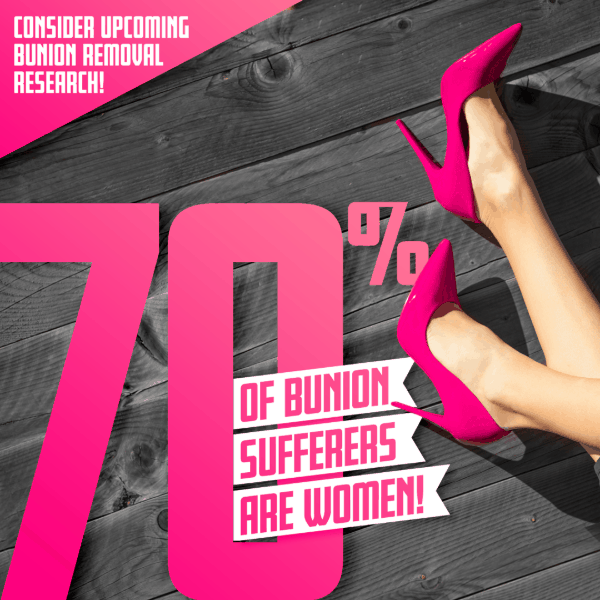Hallux vagus sounds like a spell from Harry Potter, but it is the medical term for bunions. Bunions are growths that change the foot structure, causing severe pain in many cases. You may have a bone to pick about your bunions, but how they are caused may surprise you.
A Toe Under Pressure
Bunions slowly develop when pressure on the big toe joint causes it to lean toward the second toe. The big toe eventually bends so far towards the other digits, the joint sticks out. The deformity will gradually increase and can make it painful to wear shoes, walk, or stand for long periods.

Anyone can get bunions, but they are more common in women. While we do not know the exact cause, ill-fitting footwear may increase your risk of developing them. Other factors include inherited foot shape and inflammatory conditions like rheumatoid arthritis.
Bunion Symptoms:
- Pain and tenderness
- Redness and inflammation
- Hardened skin on the bottom of the foot
- A callus or corn on the bump
- Stiffness and restricted motion in the big toe, which may lead to difficulty in walking
When to Get Help
The big toe joint flexes with every step, so bunions can severely impact daily activities. In advanced bunions, the toe can cross over or under the second toe. This can force the second toe out of alignment, and calluses can develop where the toes rub together. Possible complications from bunions are bursitis, hammertoe, metatarsalgia. Non-surgical options to help relieve the pressure and pain are:
- Wearing shoes that allow for plenty of room for the toes.
- Shoe inserts and bunion pads help buffer the pressure and evenly distribute it to the entire foot.
- Applying ice to your bunion when it becomes inflamed
- Over-the-counter pain meds to relieve inflammation and pain, or cortisone injections.
Surgical options are available when conservative therapies are no longer sufficient:
- Removing the inflamed and swollen tissue from around your big toe joint
- Removing part of the bone to straighten the big toe
- Realigning bones in the forefoot to correct the abnormal angle in your big toe joint
- Permanently joining the bones in the affected joint
Bunion Removal with Midwest Clinical Research

If you have bunions that interfere with your daily life, upcoming bunion removal studies here at Midwest Clinical Research may be an option. Qualified participants may receive bunion removal surgery at no cost and may be compensated for time and travel. To learn more, call (937) 424-1050 or visit our website.
References:
https://www.health.harvard.edu/diseases-and-conditions/what-to-do-about-bunions
https://www.mayoclinic.org/diseases-conditions/bunions/symptoms-causes/syc-20354799

